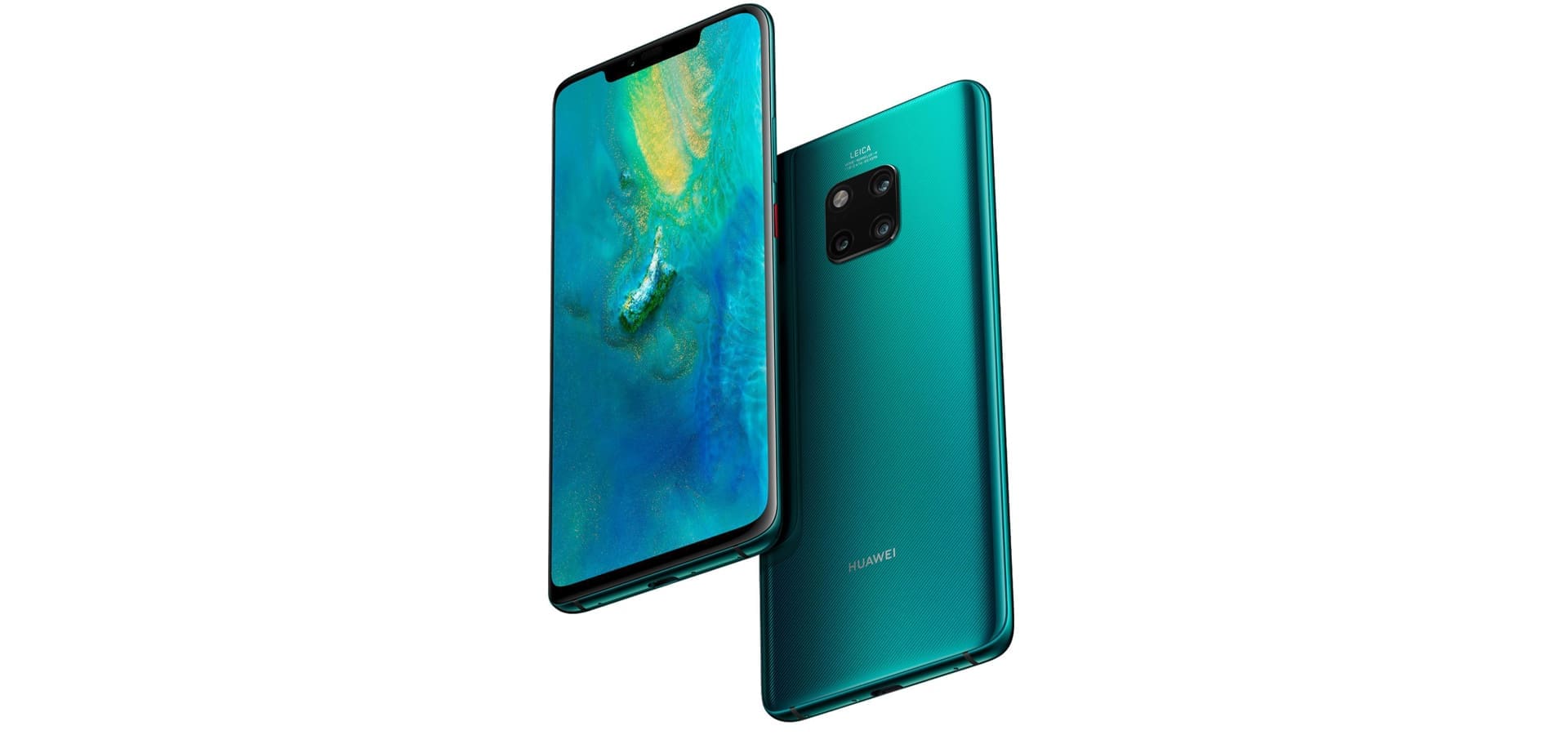A Glimpse of the Future according to the Huawei Mate 20 Pro
There are some memories that just seem to etch themselves into your consciousness for the rest of your life. There are the big memories of course, like swimming in a lagoon and encountering a hammerhead shark or partying with the saxophone player from Jackie Chan’s band. The memories that you just know at the time are going to stick around. But one of the most enduring memories of my life doesn’t involve sharks or jazz. It involves flickering amber data on a small screen and what, although I didn’t realise it at the time, was the very first time I had seen the internet.
It was 1987 and I was 8. Johnsonville in the 80’s wasn’t exactly the epicentre of technology but my father was obsessed with the latest tech. He was a firefighter but also owned two computer stores. Today you would call this a side hustle. Then, I think it was just having another job. But the thing is that it wasn’t unusual for him to be tinkering on a computer. But what made this moment different was the phone line running from the wall to a small box connected to the computer. There was also the excitement in my father’s eyes as he explained that he could talk to people in different parts of the world via the computer and get real-time information. I was oblivious to the gravity of what I was seeing at the time, but in the hindsight that three decades has given, I see now that my father was sharing with me a glimpse into the technology that would impact everything. At the time it was the internet before the World Wide Web but it was the beginning of a global change.
Today in 2018 the web is of course ubiquitous. You carry it around in your pocket, you wear it on your wrist, your fridge might even be connected to it. There are very few walks of life that haven’t been impacted, disrupted or created by it. Of course our most constant connection to it will most likely be our smartphones. And when I am saying connecting to “it”, I am meaning connecting to our friends, family, work, banking, investments, markets, everything.

The prospect that I could run an office from the palm of my hand was either insanity or sci-fi back in the 80s. Now it is a viable option. Actually, now it is an appealing option. What’s triggered this existential walk down memory lane has been the Huawei Mate 20 Pro. This is the latest offering from Huawei and sets the benchmark for their mobile devices and their competitors.
Beneath a crystal clear screen running at a super crisp resolution of 3120 x 1440 pixels is a smorgasbord of high performing technology, cutting edge chips and things that I don’t know anything about doing things much faster than they’ve ever done before.
The beating heart to the Mate 20 Pro is the Kirin 980, which is touted as the world’s first 7nm process mobile phone SoC chipset, the world’s first cortex-A76 architecture chipset, the world’s first dual NPU design, and the world’s first chipset to support LTE Cat.21.
That’s a lot of firsts if you were counting. But let’s start with the first, first. If you don’t happen to be a chipset aficionado, the concept of 7nm processing might not mean much to you and to be honest it didn’t mean anything to me either before writing this but with the help of some much smarter people here is a quick rundown…
Nanometer or nm is essentially the gate measurement of the transistor process and offers an indication on the potential density of transistors, how many can fit on a chipset. The Kirin 980 actually integrates 6.9 billion transistors in an area of less than 1 square centimeter. The lower the nm, the more transistors. Most cutting edge chips have been running 10nm over the last couple of years and that has been leading edge. Getting to 7nm is then really, really leading edge and allows for more core, more cache per chip and less power consumption. In fact the Kirin 980 7nm process technology compared with the 10nm process, improves performance by 20%, power efficiency by 40% and the overall energy efficiency of the Kirin 980 increased by 58%. The accompanying Mali-G76 GPU has also increased its energy efficiency by 178%.
As well as the shift to 7nm processing, the Kirin 980 has 3 energy efficiency architecture which has 2 super cores, 2 large cores and 4 small efficiency cores and uses the “Flex-Scheduling” intelligence mechanism to allow the CPU to adapt in heavy, medium and light-load usage, meaning that your battery lasts longer but you still have the goods when you need it.
But there is still more to the Kirin 980 thanks to its dual-core NPU (Neural Processing Unit) which is a master of AI features such as face recognition, object recognition, object detection, image segmentation and intelligent translation and can process 4,500 images per minute which means it can accurately identify a variety of objects in real time. According to Huawei, “the Kirin 980, in comparison to the Kirin 970, is an impressive leap from image recognition to object detection. The Kirin 980 sets the foundation for future AI capabilities by providing complete framework support and rich tool keys for App developers.”
Trying to get my head around the power of this chipset takes me back to that moment when I first saw someone using the internet as a kid. There is something very cool right here and now but who knows what apps and tools will be created out of this level of technology. It feels like this sort of technology is not only the gateway to the world of connectivity as we now expect it but is going to herald in a whole other level of connection and productivity.
Anyway, back to the here and now. In terms of productivity and connection, I, like most people these days, seem to tend to be juggling a few too many open tabs and apps on my mobile device. At any moment I might be reading through some editorial submissions, while opening up new tabs to do any fact checking that I need to while also flicking between updates on some currency pairs that I’m trading on my FX account, while checking emails, while listening to a podcast on my Stitcher App or audio book on Audible. This hyperactive approach to time management tends to not be so technology friendly. I’ve had phones in the past that have just given up. At the very least, it is not the best on battery power. So far though, I have had no issues with the Mate 20 Pro.
Two audiobooks, 10 Podcasts, three episodes of Bosch (season 3) on the Prime TV App, 30 Google Chrome tabs, One PDF Doc and countless video chats with my 3-year-old daughter purely so that she can try out Facebook Messenger facial effects and the Mate 20 Pro hasn’t missed a beat. Finally, a device that is a match for my level of disorganisation, I mean productivity.
I can also be “productive” for longer as the 4200mAh battery life is phenomenal and when it does finally run low, the Huawei SuperCharge capability gets you back to 70% power capacity in just 30 minutes. And when you have finished gloating to all of your mates about how you still have charge while their phones have died you can actually share some of the love because the Mate 20 Pro has the reverse charging feature, which acts like a power bank for other Android and even iOS devices.

Speaking of facial effects, unlike some of my younger colleagues, I really don’t get the concept of selfies. If I want to show my friends that I was somewhere I will just take a nicely composed photo of that place or thing (unencumbered by my large noggin blocking out most of the scene) and send it to my friends with a note to tell them that I am there. I’m pretty sure that they would believe me. And in terms of proper photography, the Mate 20 Pro is the real deal.
Huawei’s partnership with Leica has yielded a number of models with brilliant camera functionally but again the Mate 20 Pro has ratcheted things up another notch. A square array on the back carries the Leica Triple Camera setup and includes a dual-LED flash and three lenses. A 20MP (f/2.2) ultra-wide-angle lens, a 40MP (f/1.8) main lens remains and a 8MP telephoto (f/2.4). On the front (if you really do need it) is a 24MP (f/2.0) lens.
What all of these lenses give you in practical terms is an amazingly versatile range of ultra-wide angle and macro capabilities. You can go from shooting something tiny like a coin to a cityscape in seconds. As you might have gathered by now, I am a little old school and do like my professional DSLR setup but this is becoming very redundant quickly. In order to get the same versatility out of my DSLR setup, I’d almost need to carry a suitcase around with all of the bits.
The aforementioned AI will take care of everything if you just want to ‘point and shoot’ but you can also switch to Pro mode if you want some more control over things.
You can also record video up to 4K resolution at 30FPS, and super slow-mo recording at 720p/960FPS for 10 seconds.
Of course, the numbers and figures are only one part of the picture. That Bondwell luggable computer that I first saw connect to the internet had a Zilog Z80A CPU running at 4 MHz. It didn’t have a one camera lens let alone 4 and it certainly didn’t fit in my pocket. The Mate 20 Pro’s CPU runs at 650 times that speed and it’s a phone! But again, the numbers are one thing but it’s what they let you do that counts. If you can watch your daughter morph into a fire breathing dragon while running a business and trading currencies from one handheld device without missing a beat, that is magic as far as I am concerned and I will let it be just that.

